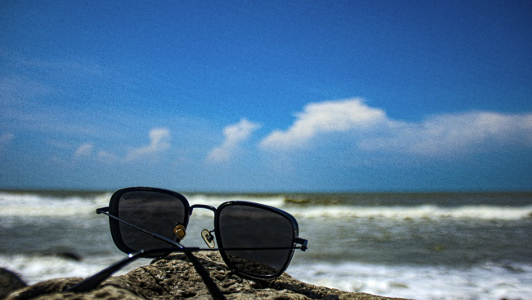
Living by the coast offers endless sunshine and stunning ocean views, which can contribute to a healthier lifestyle. For instance, living near large bodies of water has been found to promote relaxation and mental clarity, similar to the effects of meditation. Additionally, coastal air is typically less polluted than city air, helping improve lung function among individuals with respiratory conditions.
However, oceanside living can also come with hidden risks, like a higher risk of sun damage due to constant, intense UV exposure. While most coastal residents are familiar with the dangers of UV exposure for their skin, many are unaware of the serious long-term effects UV rays can have on their eye health. With the sun's powerful rays reflecting off sand, water, and other surfaces, coastal dwellers are more vulnerable than they may realize. Experts are now sounding the alarm, urging residents to take critical precautions to protect their eyes from UV-related ocular diseases that can lead to permanent damage.
Coastal regions receive more intense UV exposure due to several factors. The sun’s rays reflect off sand, water, and other surfaces, intensifying UV radiation. This "solar reflection" can increase exposure by up to 25%. Additionally, coastal areas tend to have clearer skies with less cloud cover, allowing more UV radiation to reach the surface. As a result, people in coastal areas are at a higher risk of developing eye diseases.
More specifically, one study conducted in Spain found that residents living in coastal areas experienced a higher concentration and incidence of cataracts compared to non-coastal localities. This eye condition causes the clouding of the lens and can lead to vision impairment or blindness if untreated. Prolonged UV exposure accelerates cataract formation, which is why those living in coastal areas are encouraged to take extra precautions.
Another condition linked to UV exposure is age-related macular degeneration (AMD), a leading cause of blindness in older adults. In a recent study, researchers linked cumulative lifetime exposure to intermediate levels of UV radiation with an increased risk of early AMD. To mitigate the risks of UV-related eye diseases, experts recommend several practical precautions for coastal dwellers.
The most effective way to protect eyes from UV rays is by wearing sunglasses that block 100% of both UVA and UVB rays. It’s important to keep in mind that not all sunglasses offer this level of protection, so it’s essential to check for proper UV-blocking labels. Oakley, for one, carries sunglasses called the Thinlink, which are described as having a light transmission of 9%. This means the frames are ideal for bright light conditions in coastal areas. Plus, the sunglasses fall under category 3, meaning that they adequately filter UV rays. For total protection, pair sunglasses with a wide-brimmed sun hat like the UV Protection Bucket Hat from Uniqlo.
It's also important to keep in mind that UV radiation is most intense between 10 a.m. and 4 p.m. As such, coastal residents should limit outdoor activities during these hours when possible. If outdoor activities are unavoidable, take extra precautions. Aside from donning sunglasses and sun hats, experts advise wearing UV-protective clothing and seeking shade.
Finally, routine eye exams are essential for detecting early signs of UV damage. An eye doctor can identify conditions like cataracts or AMD and provide recommendations for protection and treatment. For this, the American Optometric Association (AOA) recommends that adults between ages 18 and 64 get an in-person eye and vision exam annually. This gives individuals the chance to be evaluated for eye changes, improve their sight, and prevent vision issues through early detection of UV-related eye disease.
With these precautions, coastal residents can continue to enjoy their environment without sacrificing their eye health.